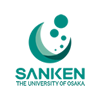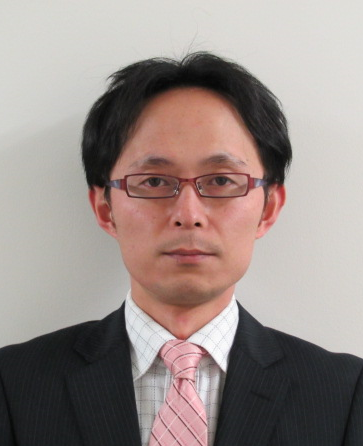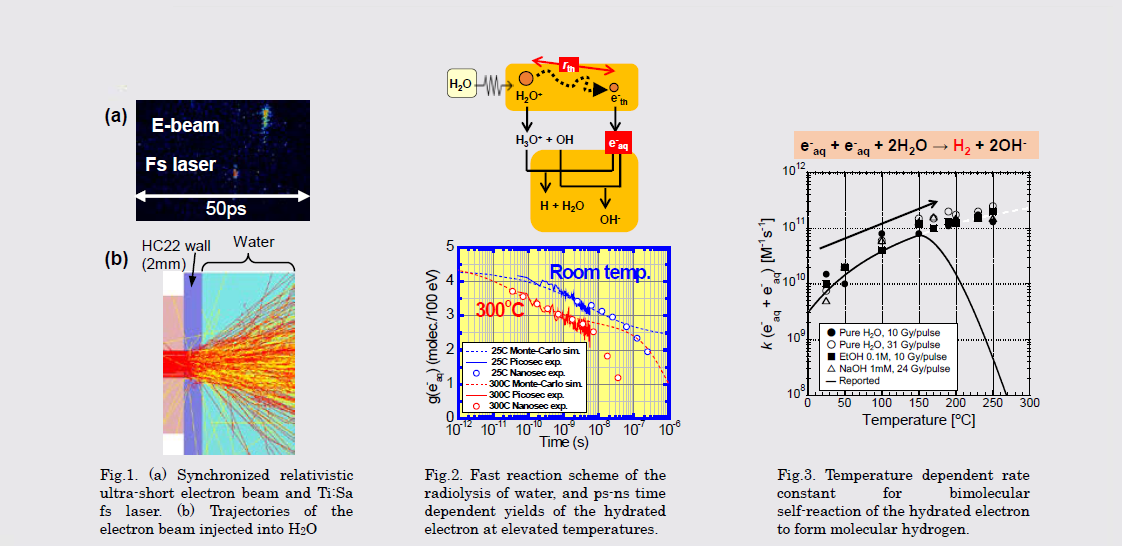
SANKEN
The University of Osaka
大阪大学
産業科学研究所

LAST UPDATE 2017/02/26
-
研究者氏名
Researcher Name室屋裕佐 Yusa MUROYA
准教授 Associate Professor -
所属
Affiliation大阪大学 産業科学研究所
量子ビーム物質科学研究分野
SANKEN, The University of Osaka
Department of Beam Materials Science -
研究キーワード
Research Keywords放射線化学
軽水炉水化学
高温高圧・超臨界流体
Radiation chemistry
Water chemistry in nuclear engineering
High temperature / high pressure, and supercritical fluids
- 研究テーマ
Research Subject -
量子ビームを用いた極限状態下の誘起反応化学
Study on radiation induced chemical reactions at extreme conditions
研究の背景 Background of the Research
量子ビームはガン治療、半導体加工、環境有害物質の無害化といった幅広い分野に利用されています。照射によって物質中に生成するイオンやラジカル、電子といった反応活性種が生成しますが、軽水炉水化学においてこれらの反応活性種は構造材料の腐食促進の原因となり、化学雰囲気の制御が長期安全性に関わる課題となっています。高温高圧状態・超臨界状態におけるピコ秒~ナノ秒~マイクロ秒といった極めて短時間に進行する放射線反応を素過程から解明し、これを基に反応システムの把握や制御の研究を行います。
Application of quantum beam is rapidly expanding in the various industrial fields such as cancer therapy, production of semiconductor devices etc. It is recognized that materials are decomposed by the ionizing radiation to form free radicals, electrons and molecular products in isolated nano-scale space (by 10-12 sec), which subsequently undergo diffusion chemical reactions. As those radiolytic products give adverse effects in corrosion behaviors of structural materials in nuclear power plants, it is of great importance to study and develop novel techniques to control the radiation-induced processes at high temperatures, or even supercritical conditions.
研究の目標 Research Objective
極短パルス電子線型加速器やCo-60ガンマ線源といった量子ビームを用いて、高温高圧・超臨界状態といった極限状態下極性溶媒中において誘起されるビーム誘起反応を追跡します。確率論的モデルやモンテカルロ法といったシミュレーションも併用することにより、反応機構の解明や新たな反応場創製のための指針を得ることを目指します。
By using linear accelerators (ultra-short electron beam) and Co-60 gamma-ray sources, yields and fast reaction kinetics of the radiolytic species induced in high temperature/pressure conditions, or even supercritical state, are investigated. Moreover, by employing numerical simulations based on a stochastic model and a Monte-Carlo method as well, we are targeting to establish the whole view of the reaction mechanisms, and also to develop novel strategies to control the new reaction schemes.
研究図Figures

論文発表 / Publications
J. Phys. Chem. Lett., 1, 331 (2010), Phys. Chem. Chem. Phys., 13, 10690 (2011), Chem. Phys. Lett., 508, 224 (2011), Phys. Chem. Chem. Phys., 14, 14325 (2012),
Phys. Chem. Chem. Phys., 14, 16731 (2012). “Supercritical-pressure light water cooled reactors”, Springer, ISBN:978-4-431-55024-2 , pp.347-375 (2014).
研究者連絡先 / HP
- muroya
 sanken.osaka-u.ac.jp
sanken.osaka-u.ac.jp - http://www.sanken.osaka-u.ac.jp/labs/bms/